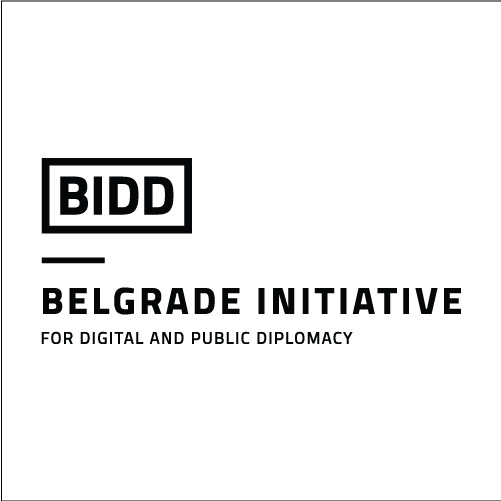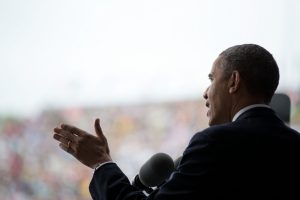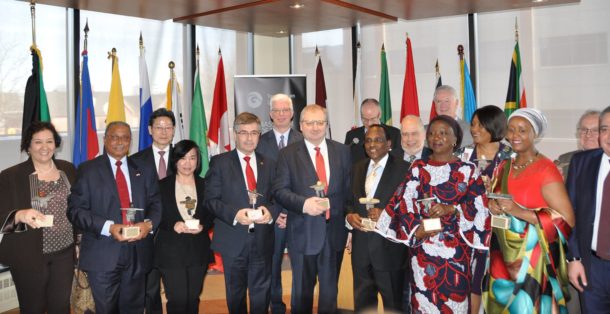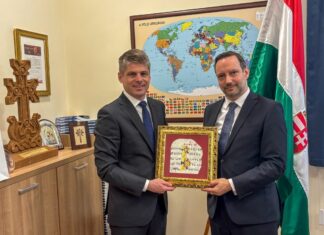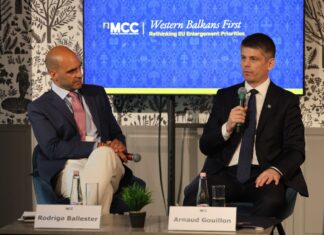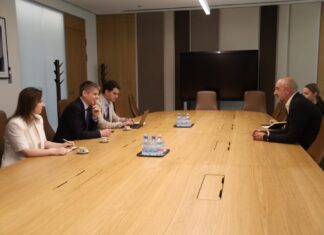link.springer.com image (not from entry) from
image (not from entry) from
The term soft power refers to the ability to shape preferences of others and getting them to do what you want through attraction without the use of payments or of military force. The three main resources of soft power are culture, political values and foreign policy. Cultural diplomacy refers to the way culture is used for public diplomacy and soft power purposes. Countries, cities, and communities have been using sports for public diplomacy [JB emphasis] and branding purposes to achieve social, political, and financial goals, and improve the image of the country. The international exposure, the focus on culture, and peaceful values in sports make it a useful tool for countries to use soft power to achieve international goals and improve their public diplomacy. The purpose of this article is to discuss the theoretical and conceptual connections between sports, soft power, and public diplomacy especially in the context of trying to improve countries’ images to achieve foreign policy goals.
Keywords
Sports Diplomacy Soft Power Cultural Diplomacy Nation Branding Public Diplomacy National Identity This is a preview of subscription content, log in to check access.Notes
Publisher's Note
Springer Nature remains neutral with regard to jurisdictional claims in published maps and institutional affiliations.
References
- Aaker, D.A. 1991. Managing brand equity: Capitalizing on the value of a brand name. New York: The Free Press.Google Scholar
- Anholt, S. 2010. Places: Identity, image and reputation. London: Palgrave Macmillan.Google Scholar
- Arning, C. 2013. Soft power, ideology and symbolic manipulation in Summer Olympic Games opening ceremonies: A semiotic analysis. Social Semiotics 23: 523–544.CrossRefGoogle Scholar
- Avraham, E. 2009. Marketing and managing nation branding during prolonged crisis: The case of Israel. Journal of Place Branding and Public Diplomacy 5: 202–212.CrossRefGoogle Scholar
- Batra, R., V. Ramaswamy, D.L. Alden, J.-B.E.M. Steenkamp, and S. Ramachander. 2000. Effects of brand local and nonlocal origin on consumer attitudes in developing countries. Journal of Consumer Psychology 9 (2): 83–95.CrossRefGoogle Scholar
- Boykoff, J. 2016. Power games: A political history of the Olympics. Brooklyn, NY: Verso.Google Scholar
- Boykoff, J., and G. Mascarenhas. 2016. The olympics, sustainability, and greenwashing: The Rio 2016 summer games. Capitalism Nature Socialism 27 (2): 1–11. https://doi.org/10.1080/10455752.2016.1179473.CrossRefGoogle Scholar
- Brannagan, P.M., and R. Giulianotti. 2015. Soft power and soft disempowerment: Qatar, global sport and football’s 2022 World Cup finals. Leisure Studies 34: 703–710.CrossRefGoogle Scholar
- Buhmann, A., and D. Ingenhoff. 2015. The 4D Model of the country image: An integrative approach from the perspective of communication management. The International Communication Gazette 77: 102–124.CrossRefGoogle Scholar
- Carter, T., and J. Sugden. 2011. The USA and sporting diplomacy: Comparing and contrasting the cases of table tennis with China and baseball with Cuba in the 1970s. International Relations 26 (1): 101–121.CrossRefGoogle Scholar
- Chalip, L. 2006. Towards social leverage of sport events. Journal of Sport & Tourism 11 (2): 109–127.CrossRefGoogle Scholar
- Chalip, L., and C. Costa. 2005. Sport event tourism and the destination brand: Towards a general theory. Sport and Society 8 (2): 218–237.CrossRefGoogle Scholar
- Chalip, L., and A. Leyns. 2002. Local business leveraging of a sport event: Managing an event for economic benefit. Journal of Sport Management 16: 132–158.CrossRefGoogle Scholar
- Coakley, J. 2015. Sports in society issues and controversies, 11th ed. New York: McGraw-Hill.Google Scholar
- Cull, N.J. 2008. Public diplomacy: Taxonomies and histories. ANNALS of the American Academy of Political Science 616 (1): 31–54.CrossRefGoogle Scholar
- Cull, N.J. 2010. Public diplomacy: Seven lessons for its future from its past. Journal of Place Branding and Public Diplomacy 6: 11–17.CrossRefGoogle Scholar
- David, O., and D. Bar-Tal. 2009. A sociopsychological conception of collective identity: The case of national identity as an example. Personality and Social Psychology Review 13: 354–379. https://doi.org/10.1177/1088868309344412.CrossRefGoogle Scholar
- Dinnie, K. 2003. Literature review place branding: Overview of an emerging literature. Place Branding 1: 106–110.CrossRefGoogle Scholar
- Dubinsky, Y. 2018. The image of Beijing and London in Israeli media coverage of the 2008 and 2012 Olympic Games. The International Journal of Sport and Society 9: 2152–7857.CrossRefGoogle Scholar
- Dubinsky, Y., and N. O’Reilly. 2012. The communication strategies of the 2008 Beijing Olympic Games. The International Journal of Sport and Society 3 (1): 43–54.CrossRefGoogle Scholar
- Fan, Y. 2010. Branding the nation: Towards a better understanding. Journal of Place Branding and Public Diplomacy 6 (2): 97–103.CrossRefGoogle Scholar
- Fitzpatrick, K.R. 2007. Advancing the new public diplomacy: A public relations perspective. The Hague Journal of Diplomacy 2: 187–211.CrossRefGoogle Scholar
- Galily, Y., M. Yarchi, and I. Tamir. 2015. From Munich to Boston, and from theater to social media: The evolution landscape of world sporting terror. Studies in Conflict & Terrorism. https://doi.org/10.1080/1057610x.2015.1076640.Google Scholar
- Gilboa, E. 2006. Public diplomacy: The missing component in Israel’s foreign policy. Israel Affairs 12: 715–747.CrossRefGoogle Scholar
- Gilboa, E. 2008. Searching for a theory of public diplomacy. Annals of the American Academy of Political and Social Science 616: 55–77.CrossRefGoogle Scholar
- Gleaves, J., and M. Llewellyn. 2014. Ethics, nationalism, and the imagined community: The case against inter-national sport. The Journal of Philosophy of Sport 41: 1–20.CrossRefGoogle Scholar
- Guttmann, A. 2002. The Olympics: A history of the modern Games, 2nd ed. Urbana, IL: University of Illinois Press.Google Scholar
- Heslop, L.A., I.R.R. Lu, and D. Cray. 2008. Modeling country image effects through an international crisis. International Marketing Review 25: 354–378.CrossRefGoogle Scholar
- Heslop, L.A., J. Nadeau, and N. O’Reilly. 2010. China and the Olympics: Views of insiders and outsiders. International Marketing Review 27: 404–433.CrossRefGoogle Scholar
- Hobsbawm, E. 1992. Nations and nationalism since 1780 programme, myth, reality. Cambridge: Cambridge University Press.Google Scholar
- International Olympic Committee. 2015. Olympic Charter. Lausanne: International Olympic Committee. Retrieved from https://stillmed.olympic.org/Documents/olympic_charter_en.pdf.
- IOC 2018. Olympic marketing fact file 2018 efition. Lausanne, Switzerland: International Olympic Committee. Retrieved from https://stillmed.olympic.org/media/Document%20Library/OlympicOrg/Documents/IOC-Marketing-and-Broadcasting-General-Files/Olympic-Marketing-Fact-File-2018.pdf.
- Jackson, S.J., and B. Hokowhitu. 2002. Sport, tribes, and technology: The New Zealand All Black Haka and politics of identity. Journal of Sport & Social Issues 26: 125–139.CrossRefGoogle Scholar
- Jaffe, E., and I. Nebenzahl. 1993. Global promotion of country image: Do the Olympics count? In Product-country images: Impact and role in international marketing, ed. N. Papadopoulos and L. Heslop, 433–452. Binghamton, NY: International Business Press.Google Scholar
- Johansson, J.K. 1989. Determinants and effects of the use of “made-in” labels. International Marketing Review 6: 47–58.CrossRefGoogle Scholar
- Jun, W.J., H.S. Lee, and J.H. Park. 2009. Roles of media exposure and interpersonal experiences on country brand: The mediated risk perception model. Journal of Promotion Management 15: 321–339.CrossRefGoogle Scholar
- Kang, Y.-S., and R. Perdue. 1994. Long-term impact of a mega-event on international tourism to the host country: A conceptual model and the case of the 1988 Seoul Olympics. Journal of International Consumer Marketing 6: 205–225.CrossRefGoogle Scholar
- Keller, K.L. 1993. Conceptualizing, measuring, and managing customer-based brand equity. Journal of Marketing 57: 1–22.CrossRefGoogle Scholar
- Klein, J.G., R. Ettenson, and M.D. Morris. 1998. The animosity model of foreign product purchase: An empirical test in the People’s Republic of China. Journal of Marketing 62: 89–100.CrossRefGoogle Scholar
- Kotler, P., D.H. Haider, and I. Rein. 1993. Marketing places. New York: The Free Press.Google Scholar
- Laroche, M., N. Papadopoulos, L. Heslop, and J. Bergeron. 2003. Effects of subcultural differences on country and product evaluations. Journal of Consumer Behaviour 2: 232–247.CrossRefGoogle Scholar
- MacLean, M. 2014. Revisiting (and revising?) sports boycotts: From rugby against South Africa to soccer in Israel. International Journal of the History of Sport 31: 1832–1851.CrossRefGoogle Scholar
- Martin, D. 2007. Rebuilding brand America: What we must do to restore our reputation and safeguard the future of American business abroad. New York: Amacom.Google Scholar
- Miller, S.G. 2004. Ancient Greek athletics. New Haven, CT: Yale University Press.Google Scholar
- Murray, S. 2012. The two halves of sports-diplomacy. Diplomacy & Statecraft 23: 576–592.CrossRefGoogle Scholar
- Murray, S. 2018. Sports diplomacy: Origins, theory and practice, 2018. New York: Routledge.CrossRefGoogle Scholar
- Murray, S., and A.G. Pigman. 2014. Mapping the relationship between international sport and diplomacy. Sport in Society 17 (9): 1098–1118.CrossRefGoogle Scholar
- Nadeau, J., L. Heslop, N. O’Reilly, and P. Luk. 2008. Destination in a country image context. Annals of Tourism Research 35: 84–106.CrossRefGoogle Scholar
- Nebenzahl, I., E. Jaffe, and S. Lampert. 1997. Towards a theory of country image effect on product evaluation. Management International Review 37 (1): 27–49.Google Scholar
- Nye Jr., J.S. 2004. Soft power: The means to success in world politics. New York: PublicAffairs.Google Scholar
- Nye Jr., J.S. 2008. Public diplomacy and soft power. Annals of the American Academy of Political and Social Science 616 (1): 94–109.CrossRefGoogle Scholar
- Olins, W. 2002. Branding the nation—The historical context. Brand Management 9: 241–248.CrossRefGoogle Scholar
- Orwell, G. 1945. The Sporting Spirit. The Tribune, December 14. Retrieved from https://www.orwellfoundation.com/the-orwell-foundation/orwell/essays-and-other-works/the-sporting-spirit/.
- Papadopoulos, N., and L.A. Heslop. 2002. Country equity and country branding: Problems and prospects. Journal of Brand Management 9: 294–314.CrossRefGoogle Scholar
- Pigman, G.A. 2014. International sport and diplomacy’s public dimension: Governments, sporting federations and the global audience. Diplomacy & Starcraft 25: 94–114.CrossRefGoogle Scholar
- Preuss, H. 2008. Signaling growth: China’s major benefit from staging the 2008 Olympics in Beijing. Harvard Asia Pacific Review 9 (1): 45–49.Google Scholar
- Preuss, H. 2015. A framework for identifying the legacies of a mega sport event. Leisure Studies 34: 643–664.CrossRefGoogle Scholar
- Signitzer, B.H., and T. Coombs. 1992. Public relations and public diplomacy: Conceptual convergences. Public Relations Review 18 (2): 137–147.CrossRefGoogle Scholar
- Spaaij, R. 2012. Olympic rings of peace? The Olympic movement, peacemaking and intercultural understanding. Sport in Society 15: 761–774.CrossRefGoogle Scholar
- Sugden, J., and A. Tomlinson. 2017. Football, corruption, and lies. New York: Routledge.CrossRefGoogle Scholar
- Szondi, G. 2010. From image management to relationship building: A public relations approach to nation branding. Place Branding and Public Diplomacy 6: 333–343. https://doi.org/10.1057/pb.2010.32.CrossRefGoogle Scholar
- Wang, J. 2006a. Public diplomacy and global business. Journal of Business Strategy 27 (3): 41–49.CrossRefGoogle Scholar
- Wang, J. 2006b. Managing national reputation and international relations in the global era: Public diplomacy revised. Public Relations Review 32: 91–96.CrossRefGoogle Scholar
- White, C.J. 2015. Exploring the role of private-sector corporations in public diplomacy. Public Relations Inquiry 4: 305–321.CrossRefGoogle Scholar



